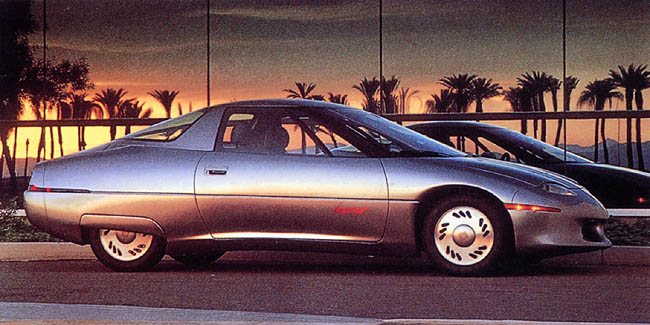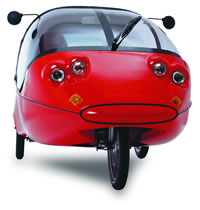Looks like the good ol’ boys at Chrysler have been paying attention. With rising gas prices, economic downturn, and their own disappointing sales, Chrysler had been secretly developing electric cars since 2007 in the ENVI program. Each of these 3 highway capable EV’s has its own distinct characteristics and function.
Dodge EV

The Dodge EV is an obvious reaction to the popularity and media buzz created by the Tesla Roadster. The car features the same Lotus styling, and a 150 to 200 mile EV range while boasting a 0-60 in under 5 seconds. Look for them to undercut the Tesla Roadster’s price, as Chrysler will be able to produce cheaper than any EV startup.
Chrysler EV

The Chrysler EV is a serial plug-in hybrid in that can go 40 miles on electric power before a gasoline generator kicks in to extend the range to 400 miles. When the small gasoline motor is on, the minivan gets 50 miles per gallon. An electric minivan is really ingenious because middle class families will be able to save money driving their ev on the long trips that really are starting to cost us an arm and a leg. This way they do not need an electric car for the day-to-day driving and a gasoline car for long trips. Having two cars to save money is sort of counterproductive and why many would be wary of buying an ev.
Jeep EV

The Jeep EV will have the same electric/gasoline combination power setup as the Chrysler EV, but the Jeep will feature four electric motors at each wheel. Which could, in theory make the Jeep EV superior to the regular Jeeps in many ways. Each wheel being independently powered could open up some interesting opportunities in maneuverability during off-roading situations. Jeep EVs will also not have regular axle setups that can hinder Jeeps off road.
Chrysler says around 100 test cars should be on the road next year. There is really no reason why these cars shouldn’t be released within the next couple years, because they are not using any new technology that has not already been demonstrated by EV startups. Regardless, anytime a big automaker like Chrysler recognizes electric car’s potential, it is good news for everyone… except the startups.










